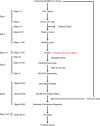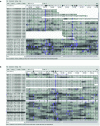SHIMS 3.0: Highly efficient single-haplotype iterative mapping and sequencing using ultra-long nanopore reads
- PMID: 35700171
- PMCID: PMC9197060
- DOI: 10.1371/journal.pone.0269692
SHIMS 3.0: Highly efficient single-haplotype iterative mapping and sequencing using ultra-long nanopore reads
Abstract
The reference sequence of structurally complex regions can only be obtained through a highly accurate clone-based approach that we call Single-Haplotype Iterative Mapping and Sequencing (SHIMS). In recent years, improvements to SHIMS have reduced the cost and time required by two orders of magnitude, but internally repetitive clones still require extensive manual effort to transform draft assemblies into reference-quality finished sequences. Here we describe SHIMS 3.0, using ultra-long nanopore reads to augment the Illumina data from SHIMS 2.0 assemblies and resolve internally repetitive structures. This greatly minimizes the need for manual finishing of Illumina-based draft assemblies, allowing a small team with no prior finishing experience to sequence challenging targets with high accuracy. This protocol proceeds from clone-picking to finished assemblies in 2 weeks for about $80 (USD) per clone. We recently used this protocol to produce reference sequence of structurally complex palindromes on chimpanzee and rhesus macaque X chromosomes. Our protocol provides access to structurally complex regions that would otherwise be inaccessible from whole-genome shotgun data or require an impractical amount of manual effort to generate an accurate assembly.
Conflict of interest statement
The authors have declared that no competing interests exist.
Figures


References
Publication types
MeSH terms
Substances
Grants and funding
LinkOut - more resources
Full Text Sources
Miscellaneous

